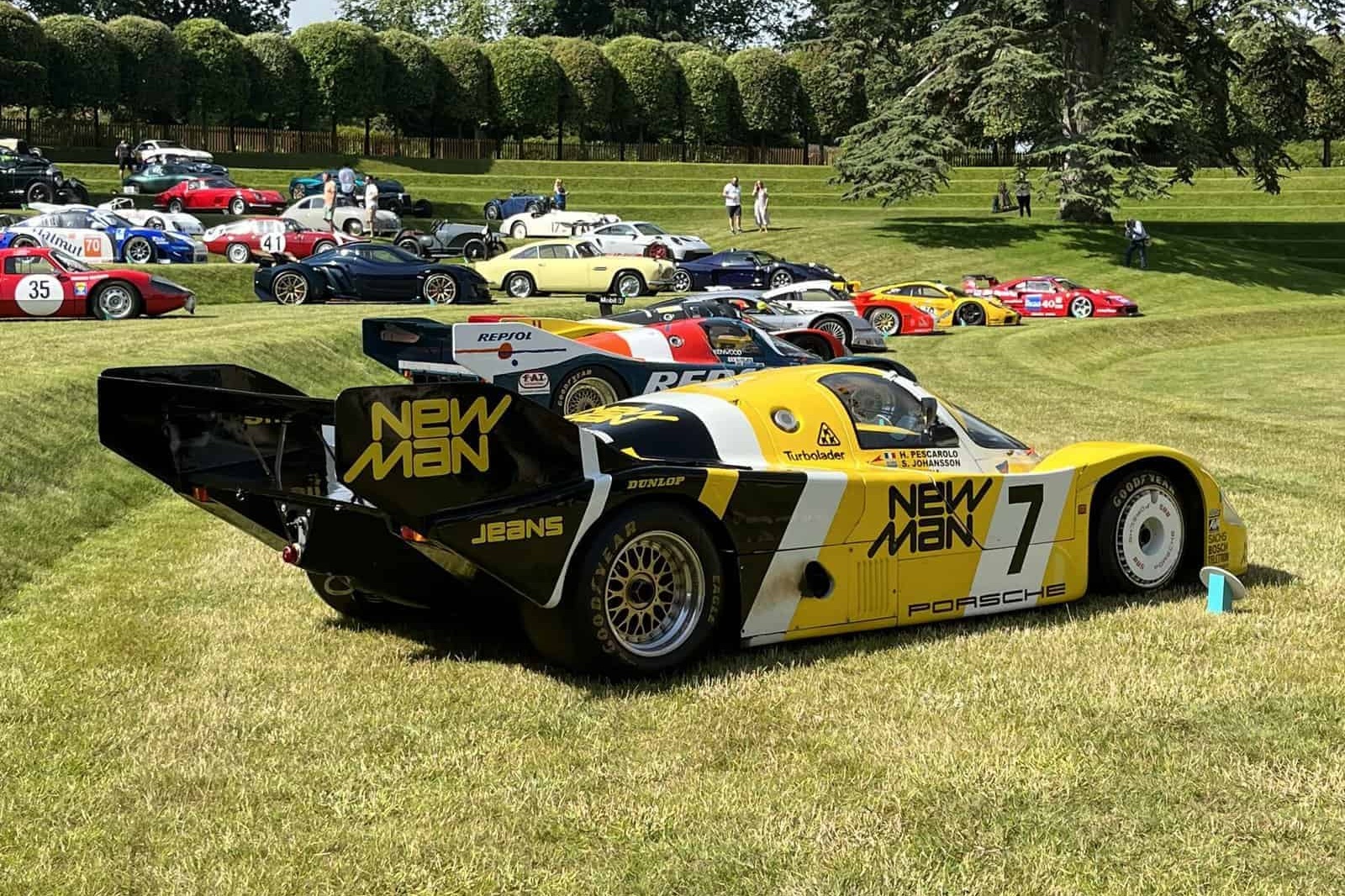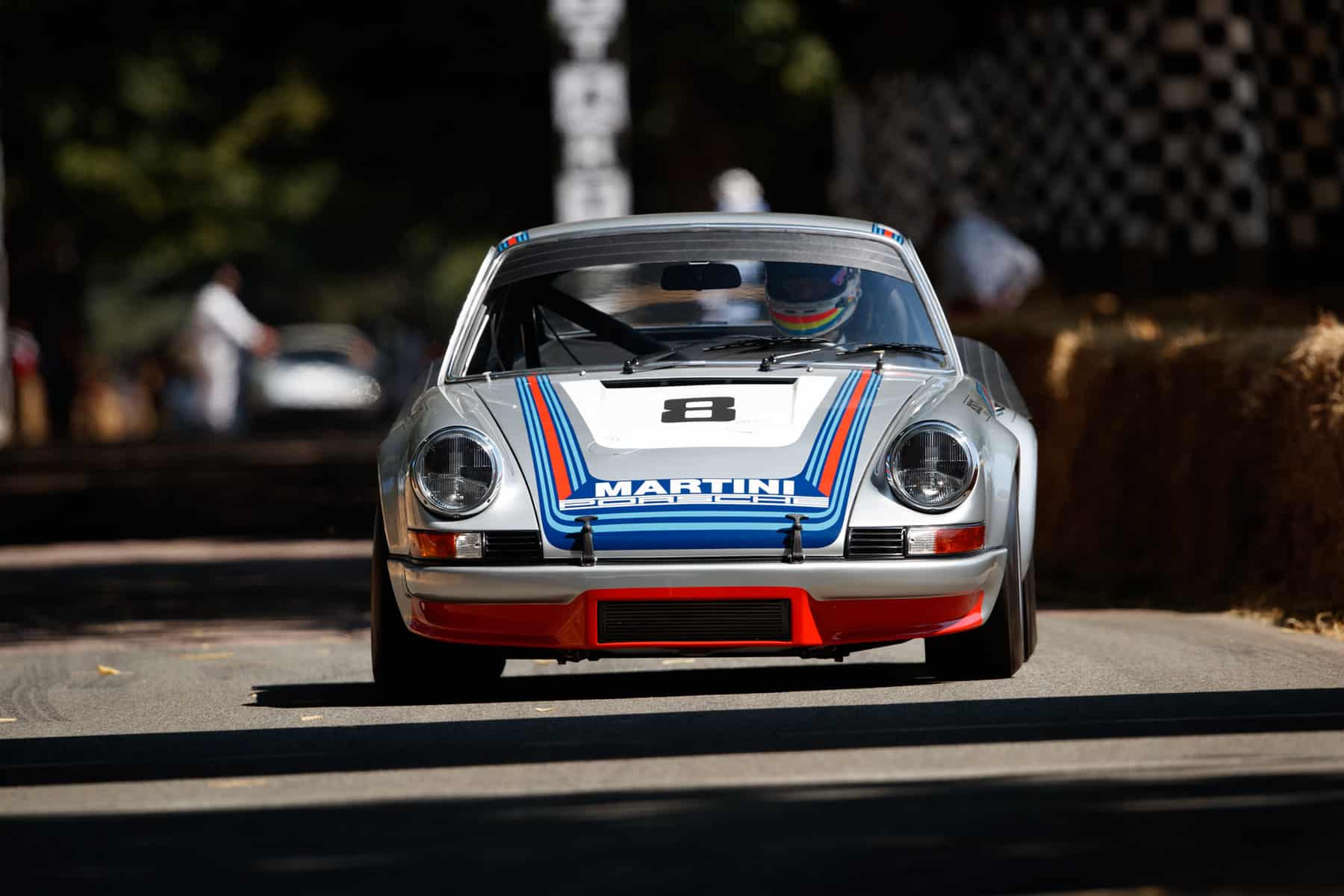Ford Capri RS 3100 Cologne
How a rivalry gave birth to a speed demon
BY: WOUTER MELISSEN
“This was the most fun I have had in a racing car,” an elated Dario Franchitti said when he stepped out of the Ford Capri RS 3100 Cologne he raced at the recent Estoril Classics. Like so many great racing cars, the car driven by the three-time Indy 500 winner came into being as the result of a fierce rivalry.
That particular rivalry was between BMW and Ford in the 1973 and 1974 European Touring Car Championship (ETCC). The Ford in this particular case was the Cologne, Germany-based arm of Ford Europe. “Cologne” was responsible for the Touring Car program, while the Boreham, England-based Ford subsidiary focused mainly on rally cars. There was also a personal touch to this rivalry, as Cologne’s head of motorsport, Jochen Neerpasch, had jumped ship to BMW in 1972, where he established the now legendary Motorsport department.
Before BMW joined the ETCC, Cologne had gradually developed the two-door Capri into a race-winning machine. A first major step in this process was the introduction of aluminum cylinder heads for the production car’s V6 engine. These had been developed by engine wizard Harry Weslake. To homologate the new engine, the road-going Capri RS 2600 was introduced. This would form the basis for the successful competition car. The 2.6-liter engine was stretched to the maximum allowed in the 3.0 class and by 1972 a coil-sprung rear end completed the puzzle. The latest specification Capri racers scored a debut victory in the 1972 Monza 4 Hours but the announcement of Neerpasch’s departure overshadowed the weekend.
The new motorsports director at Cologne was Mike Kranefuss. Despite the great successes during the 1971 and 1972 season, he was far from complacent. He realized that a serious threat to Ford’s domination would soon emerge from Munich. To this end, Cosworth was commissioned to create an all-new engine for the 1974 season, capable of taking on the best BMW could bring to the table. While the new engine was developed, BMW Motorsport rolled out the 3.0 CSL. By the summer of 1973, it was clear that Kranefuss had been right to fear the fire lit in Munich by his former boss.

At the time, the ETCC used the international Group 2 regulations. There was also a Division 1 for under 2.0 and a Division 2 for over 2.0 cars. The rules were relatively lenient and allowed Cosworth much freedom to develop what would be known as the GAA engine. For homologation purposes, the block was still derived from the “Essex” V6 of the production Capris. The heads were all new and no longer featured the push-rod actuated valves as found in the road car and the previous Group 2 Capris. Instead, the new heads boasted twin overhead camshafts, driven by exposed belts at the front of the engine. Each cylinder featured two inlet and two exhaust valves. In many ways, the Cosworth GAA was inspired by the hugely successful DFV Formula 1 engine also produced for Ford by Cosworth.
In response to the arrival of BMW’s 3.5-liter engined CSL, the bore and stroke of Ford’s V6 was also increased. The GAA engine had a displacement of just over 3.4 liters, which saw the Capri move to the over 3.0 sub-class. The regulations did require that there was a road-going equivalent with an engine larger than 3.0 liters. For this reason, BMW had already increased the 3.0 CSL road car’s engine from 2,986 cc to 3,003 cc. Ford addressed this issue by producing a run of two hundred and fifty Capri RS 3100 homologation specials in November and December of 1973. As the name suggests, it was powered by an engine that had a swept volume of just under 3.1 liters. This was just a larger version of the regular Essex production engine with a single camshaft and steel cylinder heads.
Producing around 450 hp and mated to a ZF five-speed gearbox, the GAA engine was mounted in a further developed version of the Capri chassis. To compensate for the mass of the new engine, the radiators were mounted in the trunk. Halfway through the 1974 season, these were moved to the rear fenders to improve cooling. Further changes included center lock wheels to speed up pit-stop times. Under the wildly flared wheel arches, massive slick tires were mounted on the wheels that were 12 inches wide at the front and a whopping 15 inches at the back. Despite all the modifications, the 1974 Capri was only around 70 kg heavier than its predecessor at 1,040 kg. Referring to the homologation model it was supposedly derived from, the competition car was also dubbed the RS 3100.
Kranefuss had been justifiably worried about what BMW Motorsport could bring to table. Well aware of the engineering prowess at Ford of Europe, Neerpasch had also anticipated Cologne’s next move. For the 1974 season, the factory CSLs also received a revised top-end. Instead of a single overhead camshaft, the 3.5-liter straight six now also featured a twin-cam head with four valves per cylinder. The new M49 BMW engine produced similar figures as the GAA V6. The CSL was slightly heavier but it was homologated to run even wider tires and a full-width rear wing.
In addition to running brand-new, more powerful cars, Ford and BMW also hired high-profile drivers like Jochen Mass, Niki Lauda, Jacky Ickx, and Ronnie Peterson to pilot them. At the start of the year, all ingredients for a stellar season of racing were available. Sadly, global affairs caught up with the world of motorsport as the Oil Crisis saw both Ford and BMW scale down their efforts. In what was a six-race season, the two new cars only went head-to-head in two events. The first was round two of the ETCC, the four-hour race at Salzburg. A single BMW was entered for Hans-Joachim Stuck and Jacky Ickx, while Ford fielded a pair of Capris; one for Mass and Lauda and the other for Dieter Glemser and Toine Hezemans. The BMW started on pole but there were just five tenths of a second separating the three cars. Sadly, both Capris suffered an engine failure, enabling Stuck and Ickx to win the race with relative ease.
Cologne and Munich next faced off at the high-profile, six-hour race at the Nürburgring and both works teams entered two cars. It was the first time the Capris featured the relocated radiators. The Peterson/Stuck-entered BMW was fastest in qualifying with the two Capris lining up for the race in second and third. The race proved brutal for the four cars as Mass rolled one of the Capris early in the race in slippery conditions and both BMWs were forced to retire with mechanical issues. The sole surviving Capri was delayed due to a differential issue. Despite losing close to twenty-eight minutes in the pits to have the differential replaced, it nevertheless finished second overall and first in the Division 2 class. A further consolation was that the overall winner was a Ford Cologne fielded, Division 1 Escort RS 1600.
BMW decided not participate in the final two rounds of the ETCC, relying on privately entered CSLs instead. Still seeking a maiden ETCC victory for the new Capri, Ford did enter two cars for both the Zandvoort and Jarama races. At the Dutch track, local hero Toine Hezemans and Dieter Glemser started on pole from the other Capri, which saw Mass now joined by aspiring young racer Rolf Stommelen. In wet conditions, Hezemans built up a healthy lead of three laps over his teammates. He was then hit from behind by Urs Zondler in a privately entered CSL. The power of the fuel pump was cut but Hezemans was able to repair it on the track with his teeth, using the feed to the rear lights to power the pump. When he was able to rejoin, he was five laps down but, crucially for Ford, it was the Mass/Stommelen Capri that came through to claim the victory instead.
The final round of the 1974 European Touring Car Championship was at Jarama, just north of Madrid, Spain. Thanks to consistent results with the factory and privately entered Escorts, Ford had already won the manufacturers’ trophy. Only the drivers’ title was still up for grabs with Hans Heyer leading, thanks to the points he had amassed in a Zakspeed-prepared Escort. To ensure he would beat BMW racer Alain Pelitier to the title, Ford sent a single RS 3100. It was entered for Hezemans and Klaus Ludwig, while Heyer would decide late in the race if he would drive his regular Escort or compete in the Capri instead. Hezemans, who would drive both cars in the race, qualified the Capri on pole. Now fully sorted and not really challenged, it won the race with a lap to spare from the Zakspeed Escort. Heyer had opted to race in the Capri and ended the year as drivers’ champion, ensuring Ford won both titles.
The win at Zandvoort had, in fact, not been the first for the GAA-engined Capri. In April of that year, Stommelen had already scored an outright win in the Eifelrennen at the Nürburgring, which was part of the German DRM series. The following month, the team was back at the ‘Ring to compete in the World Championship 1000 km race. Mass and Lauda were forced to retire from the race after losing a wheel due to a nut not being properly tightened. Later in the year, Stommelen won the DRM support race of the German Grand Prix, again at the Nürburgring. Ludwig also won a DRM race at the Hockenheimring with the RS 3100. The final outing of the 1974 season came at the Kyalami Six Hours, which was another round of the World Championship. Mass and Hezemans finished fifth overall and clinched a victory in the Touring Car class.
This was also the very last outing for the Capri RS 3100 as a works car after an uncertain economic climate brought the cancellation of the program. The two surviving cars were later raced in local events but with little success. By stark contrast, the 24-valve 3.0 CSLs continued to be raced, scoring many wins on both sides of the Atlantic. It was not quite the end of the racing career for the GAA engine. For homologation reasons, Cosworth had been obliged to complete one hundred sets of heads. Most of these were surplus to requirements at the end of 1974 but a new use was found powering F5000 single seaters. Here the GAA proved an interesting alternative to the five-liter small-block V8s that had powered the F5000 cars since the late 1960s. Some Ford privateers, like Broadspeed, also upgraded their Capris with the GAA engine. Reportedly, stacks of GAA parts were still found on the shelves at the Boreham facility many years later.
One of the two factory cars was eventually returned to Cologne and remains in the Ford of Europe collection. The other one has stayed in private hands and it was this car that Franchitti drove at Estoril. It spent some time in Tom Walkinshaw’s private museum and was later restored to full running order by an American collector. In recent years, it was acquired by another American, Zak Brown. The McLaren Racing chief executive officer explains why he added it to his stable of significant racing cars: “It is an iconic factory car that is very rare and was driven by some of the best racers in the world.”
Like many cars in his collection, the Capri is beautifully maintained for historic racing by the United Autosports team Brown owns together with British racer Richard Dean. When pressed on why the Cologne Capri was so much fun to drive, Franchitti did not point to a single element but instead explained it was a bit of everything – the power, the sound, the driving position, and the handling. While fun to drive, it is not the easiest, according to Brown: “It has a lot of power and very heavy steering!” This sentiment was echoed by Franchitti, who described a fast lap as quite exhausting, partially because of the massive front tires fitted to the car, which require a monumental effort to steer.
Thanks to the introduction of the Heritage Touring Cup by French organizers Peter Auto, 1970s touring cars have become much sought after. The works Capris and CSLs were the fastest machines of the era but they are now quite rare. The regulations do permit that period cars are built up to full Group 2 specification. As a result, Brown and Franchitti faced off against four other GAA-engined Capris. Purists will be happy to learn that Franchitti managed to beat all comers to pole position in the genuine article. Mechanical issues thwarted the pairings efforts in the race. In 2019 there were no such issues, when Brown did win the one-hour HTC race at the Dix Mille Tours with business partner Richard Dean as co-driver.

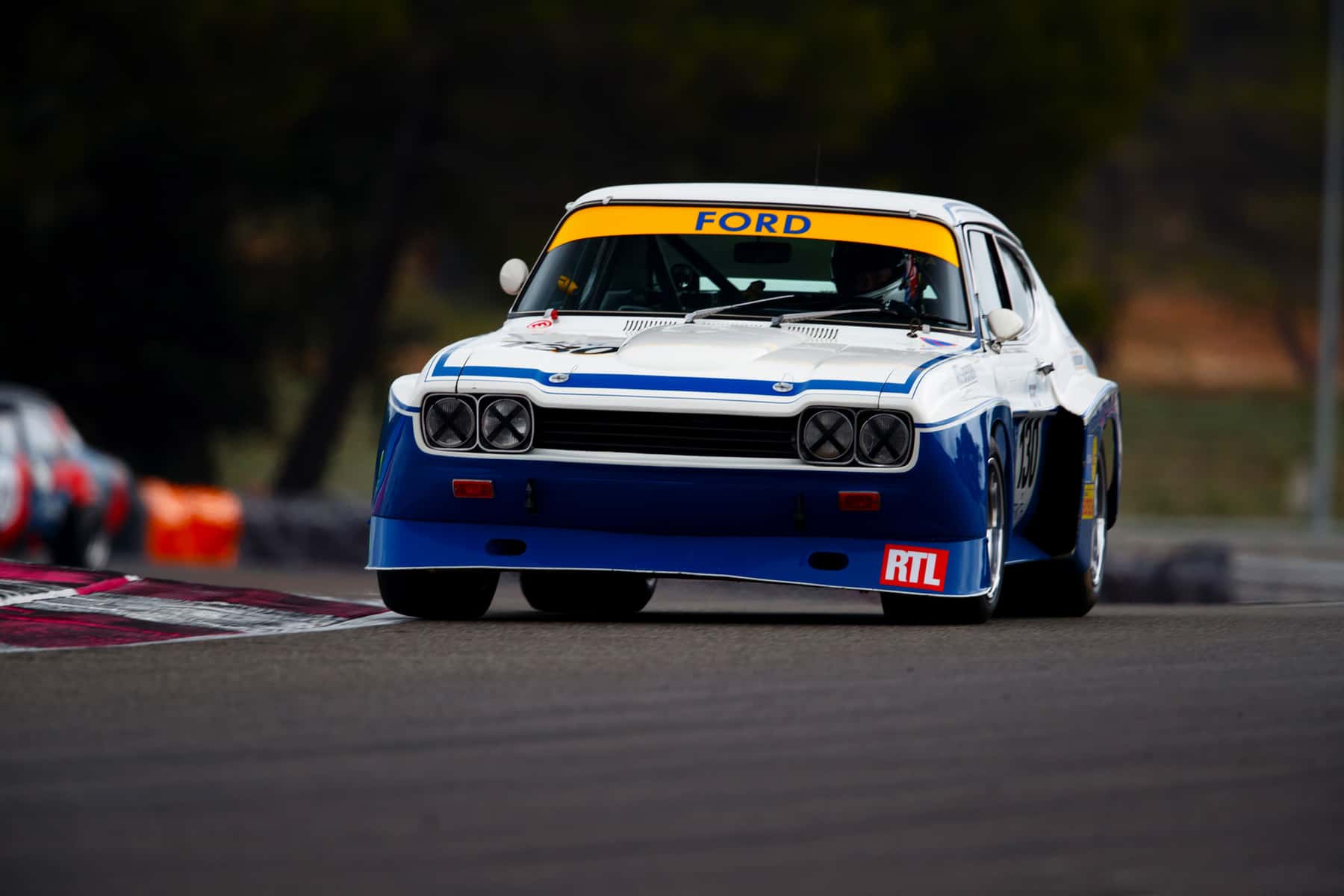
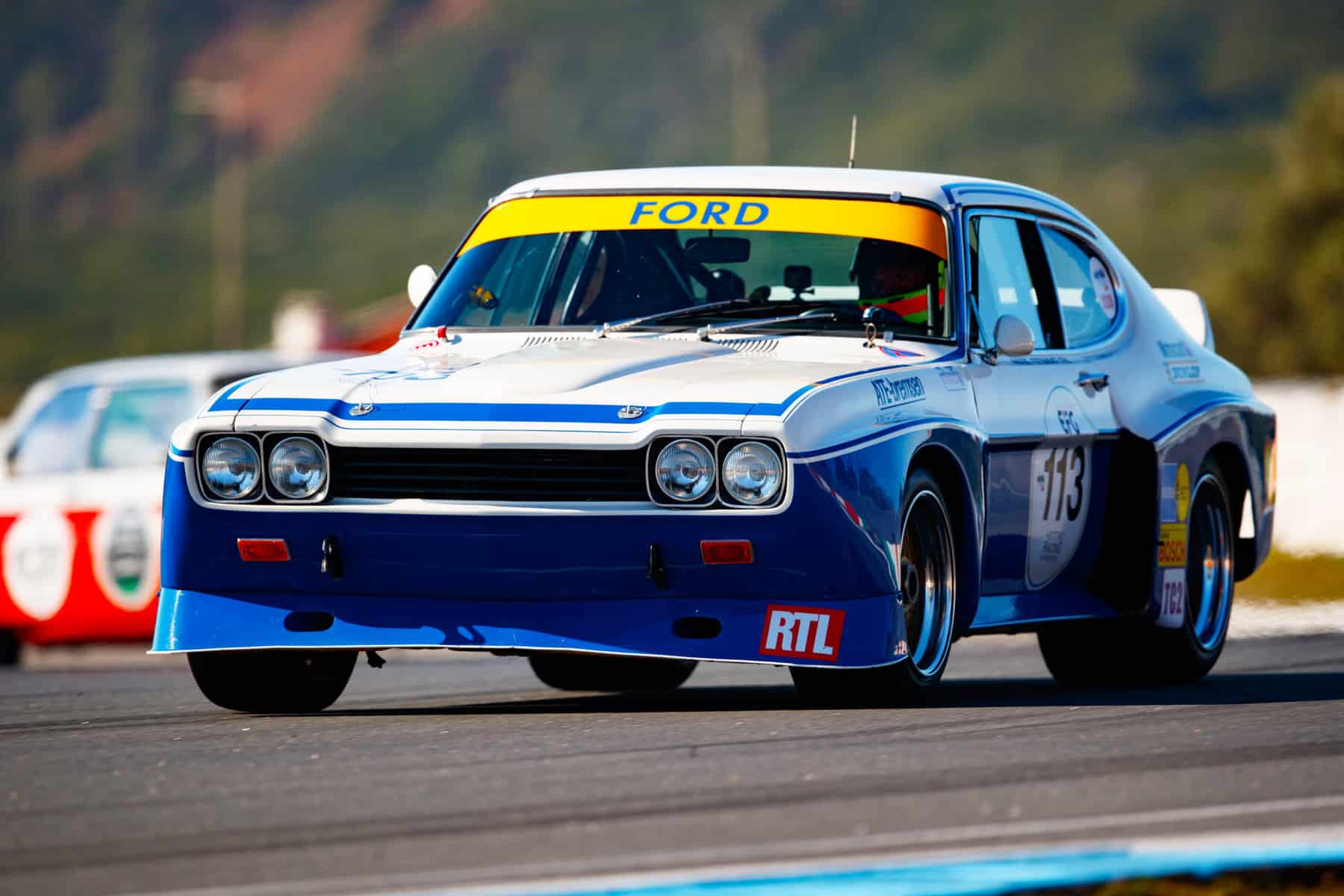
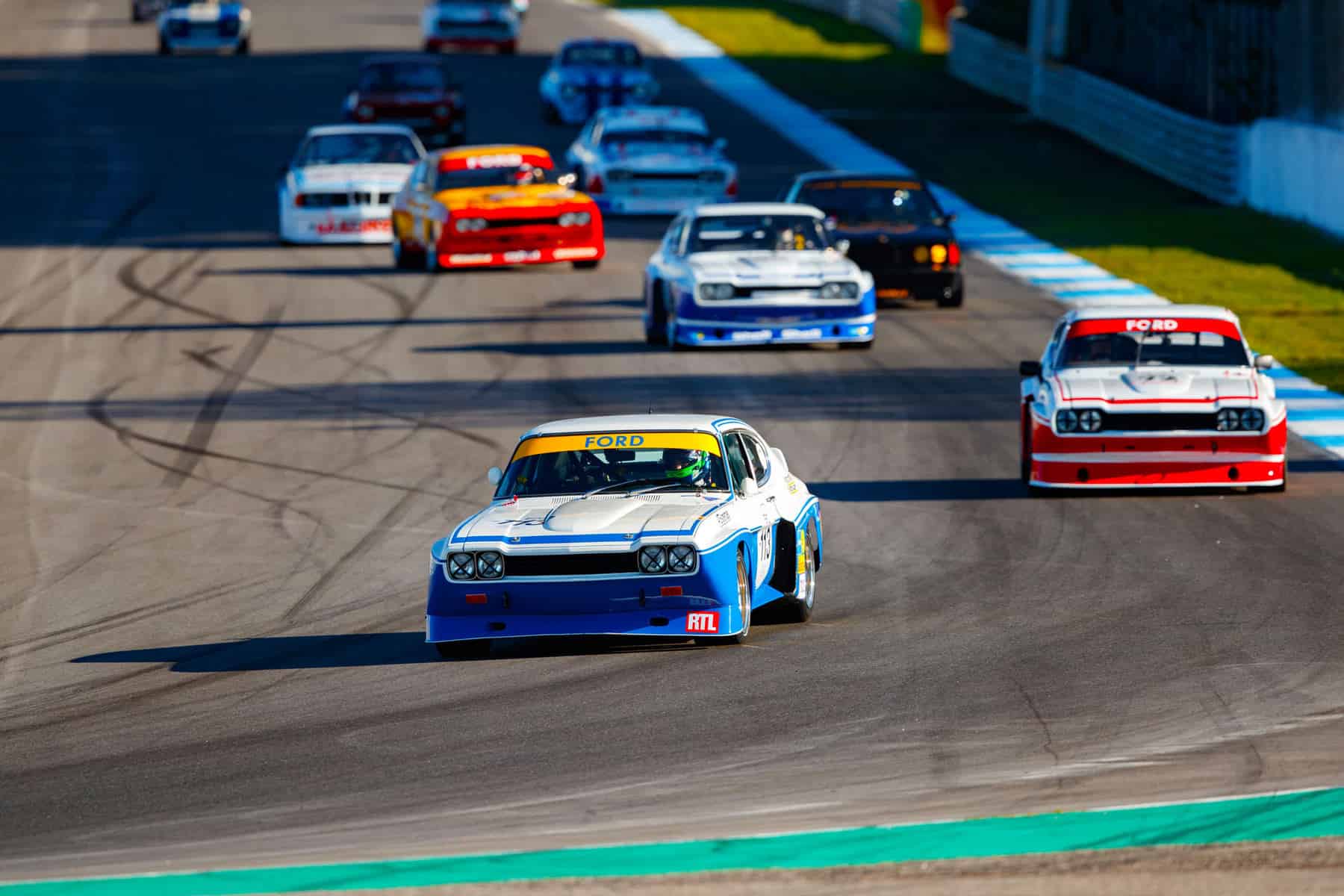
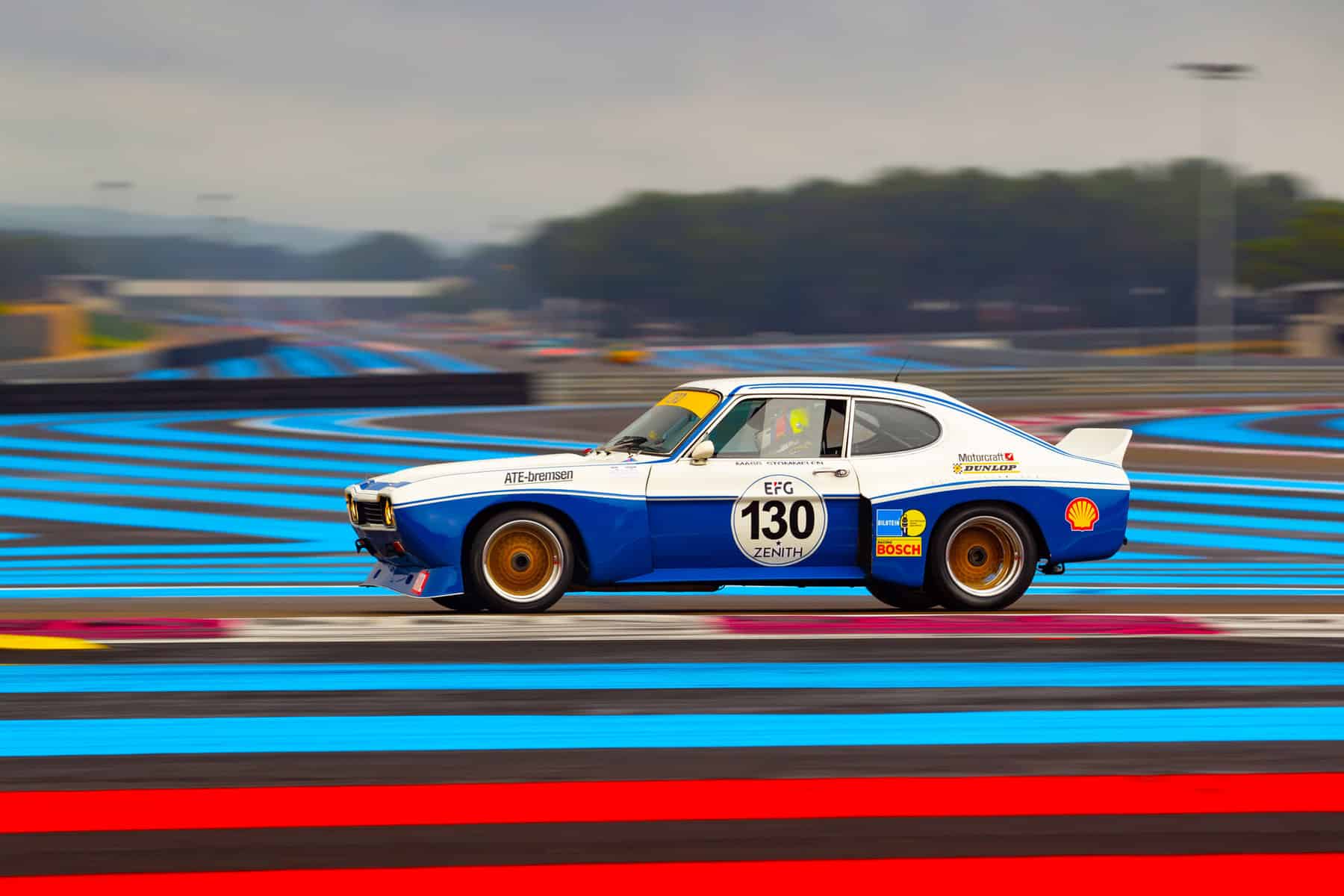
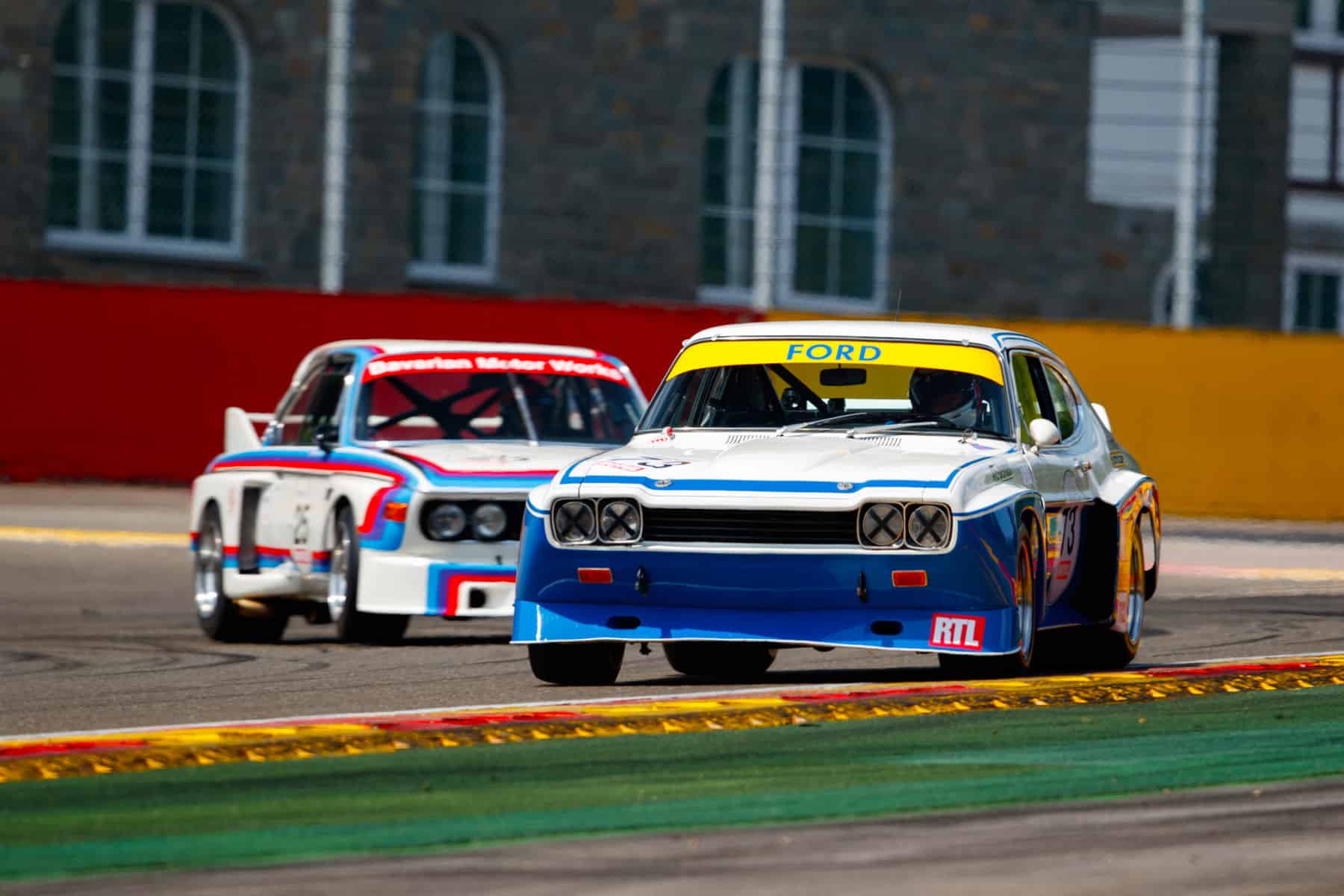


![alfa gtz perfectly imperfect webannerl[1]](https://automedia.revsinstitute.org/wp-content/uploads/2024/08/Alfa-GTZ-Perfectly-Imperfect-webannerl1-uai-1200x800.jpg)
